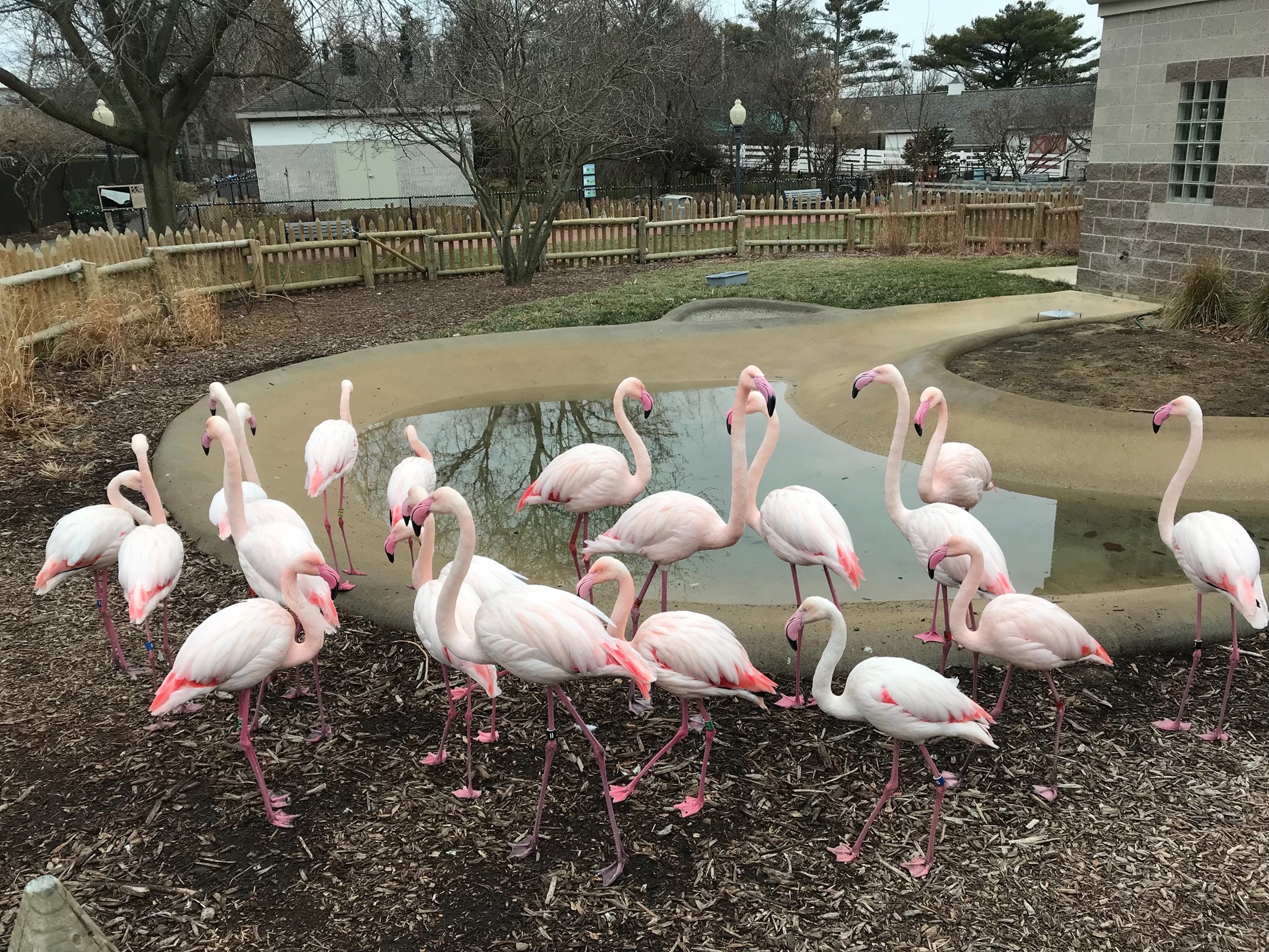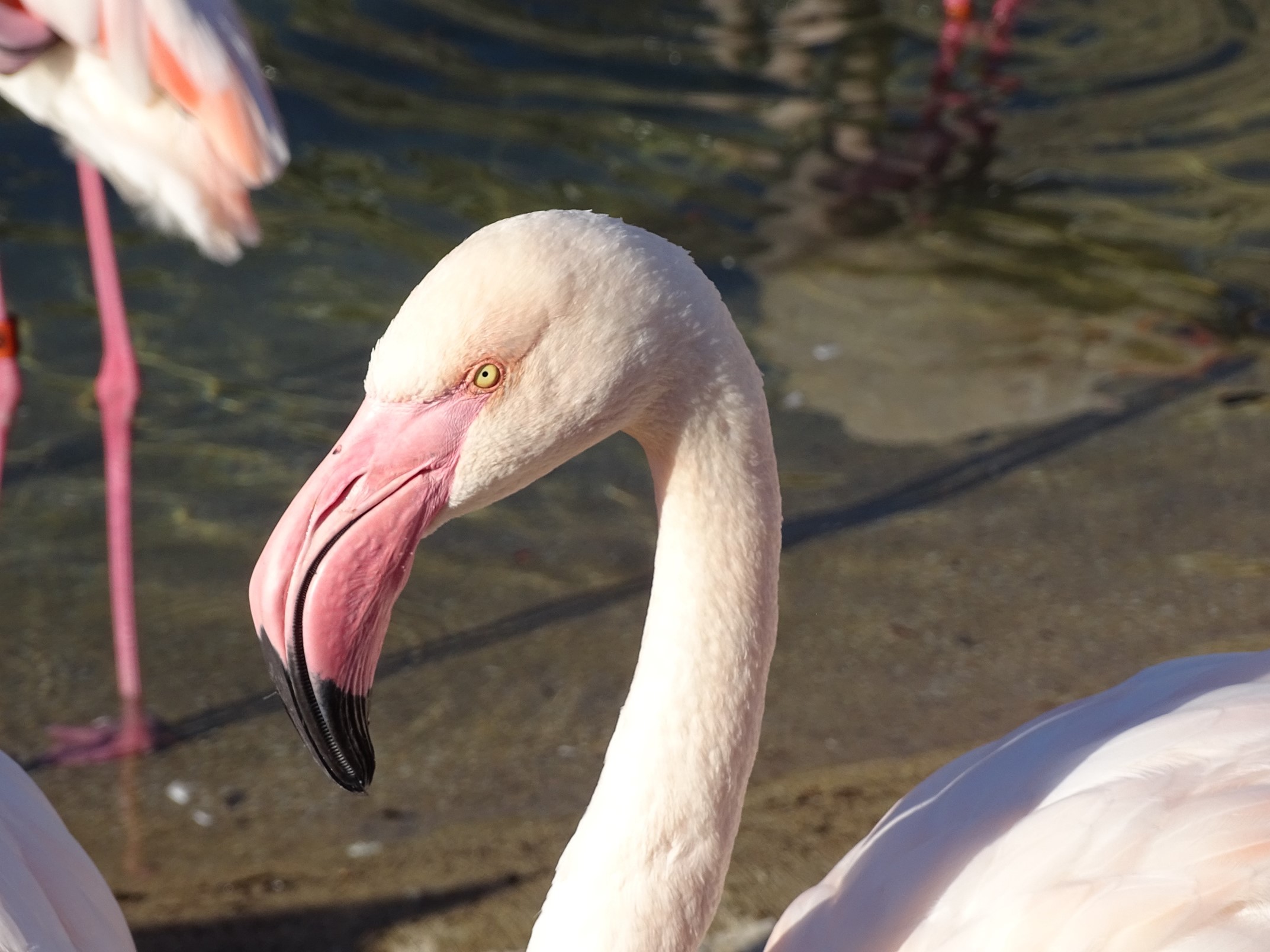The Flamboyance is Back!
The first animal guests usually see when they enter Miller Park Zoo is a group of flamingos. Often referred to as a flock, the official name for a group of flamingos is a flamboyance.
These flamingos, along with all other birds at the Zoo, have been in quarantine to avoid any chance of exposure to avian flu from wild birds. As of June 7, they are back in their habitat and ready to greet visitors.
Four flamingo species are distributed throughout the Americas, including the Caribbean, and two species are native to Africa, Asia, and Europe. Most of these six species are a pink/orange color, though some can be white, gray, and even blue. The color of flamingos comes from the food they eat. A type of algae that turns the flamingo into the bright pink bird. The underneath, of their wings are black colored.

The flamingos at Miller Park Zoo are Greater Flamingos. They are the largest of the species and have the palest plumage of all the flamingos. They can measure up to five feet tall and weigh up to eight pounds. When temperatures get below 40°F they are moved inside.
FUN FACT: Flamingo legs bend just like human legs. The joint that looks like their knee is actually an ankle joint. Their knees are higher up their legs and hidden by its body and feathers.
The smallest of the flamingo family is the lesser flamingo which reaches about three feet tall. One attribute all flamingos have in common is their long legs. They can reach anywhere form 30-50 inches. Flamingos usually stand on one leg while the other is tucked beneath their bodies. The reason for this behavior is not fully understood. One theory is that standing on one leg allows the birds to conserve more body heat. An alternative theory is that standing on one leg reduces the energy expenditure.

Flamingos have large oddly shaped beaks. They use their beaks to filter food out of the water and to separate mud and food in the water. Flamingo’s mouth is covered in little hairs called lamellae. This hair assists in the filtering of water. Flamingos also use their rough tongues to filter food out of the water.
They have a lifespan of anywhere from 20 to 30 years in the wild, but in captivity have been known to live up to 50 years old or longer. The oldest Flamingo on record died at the age of 83 years old in 2014 at the Adelaide Zoo in Australia.
Flamingos are flock animals. Being with the flock is their only defense against harm. Some zoos have covered entire walls with mirrors which lets the flamingos think the flock is twice the size it actually is, thereby making them feel safer. No flamingo likes to be alone. When one needs to be taken to the infirmary for medical care and must stay overnight keepers take a “buddy” flamingo so the trip to the vet is not so frightening.
We are thrilled to have our flamingos back in their habitats and ready to greet visitors to the Zoo.
Stop by and visit the flamboyance!


